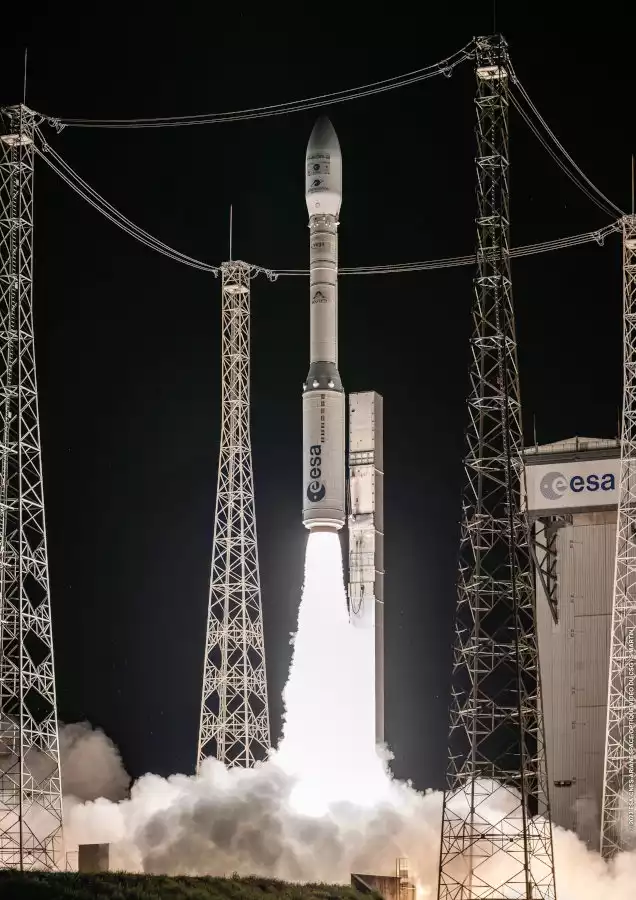Every weekend, we present an image that has made the news or caught our attention. On October 9, the European light launcher completed its 23rd mission from the Guiana Space Center.
Two payloads on board
After a one-day postponement due to an anomaly in the ground facilities, the VV23 mission from Vega blasted off at 1:36 UTC on October 9 from the Guyana Space Center, for the fifth shared SSMS (Small Satellites Mission Service) mission offered by Arianespace on its light launcher since September 2020.
The two main payloads carried were the Earth observation satellite Theos 2 (450 kg), built by Airbus Defence and Space on behalf of Thailand's Geoinformatics and Space Technology Development Agency (GISTDA), and the Triton meteorological satellite (280 kg) from the Taiwanese Space Agency (TASA).
Among the ten cubesats also present was the French demonstrator N3SS (Nanosat 3U pour la Surveillance du Spectre), developed by Cnes and Toulouse startup U-Space.
In addition, several missions were supported by the European Commission : Anser Leader, Anser Follower 1 and Anser Follower 1 (Spanish cubesats), CSC/Syndeo 1 and 2 (Dutch cubesats) and EstCube 2 (Estonian student cubesat).
Nominal flight
The flight of the three first stages of the launcher built by Avio lasted just over 6 minutes.
The Avum upper stage then ignited twice before simultaneously injecting the two main satellites, at an altitude of 601 km.
The ten cubesats separated from the SSMS dispenser after two more ignitions of the stage, 43 minutes and 58 seconds after liftoff
A fifth and final Avum ignition finally de-orbited the stage.
Last European launch of the year
The VV23 mission marked Vega's return to flight after the failure of the first commercial mission of the C version, in December 2022.
VV23 was Arianespace's third and final mission of 2023, following Ariane 5 flights VA 260 and 261 on April 14 and July 5, the latter marking the final shutdown of the heavy launcher.
It was also the penultimate flight of the first version of Vega, commissioned in February 2012.
A final flight is now expected next April (with the Biomass Earth observation satellite from the European Space Agency), before finally giving way to Vega C, whose next flight won't take place until the fourth quarter.
Découvrez cet article sur Air&Cosmos

